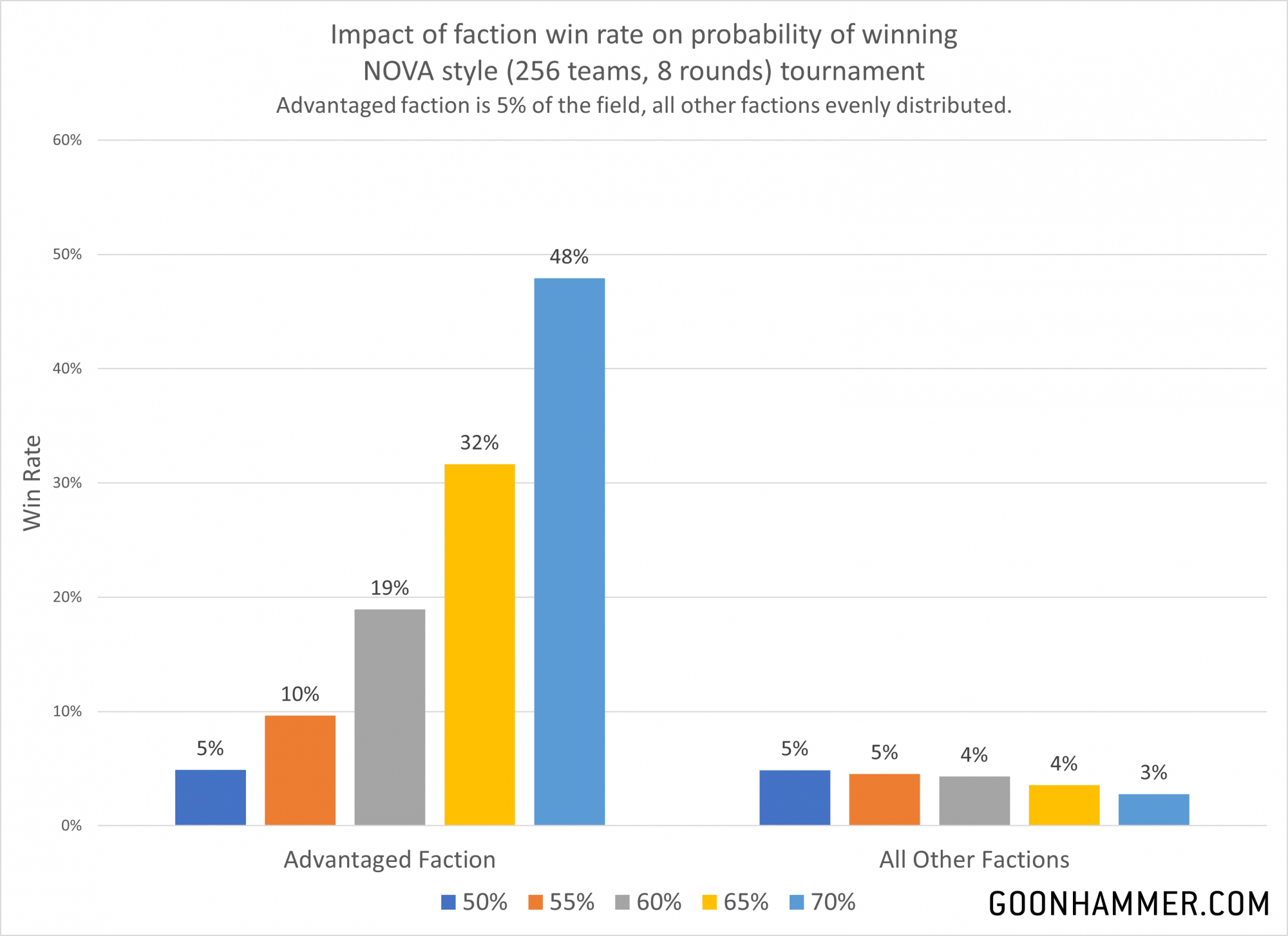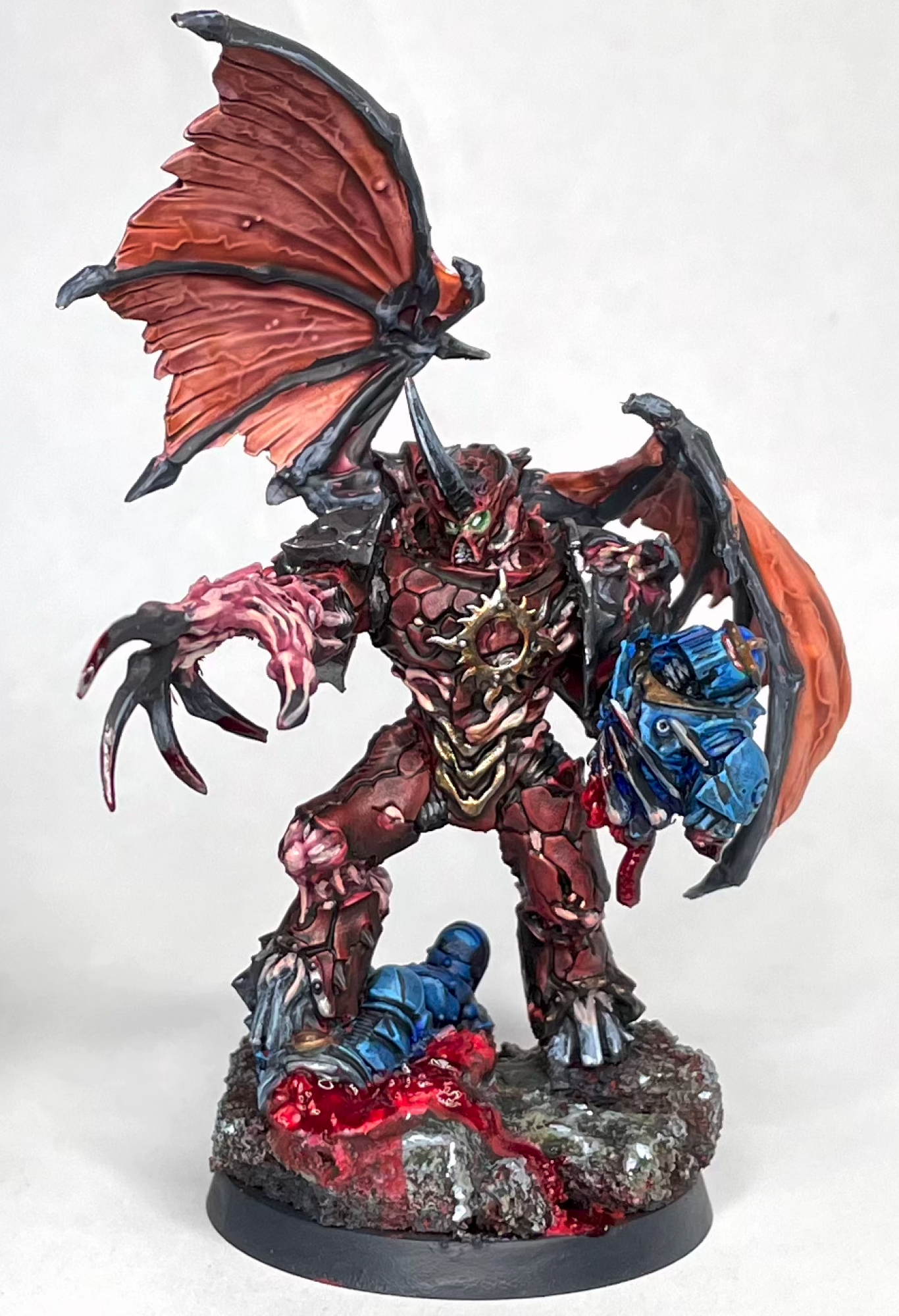This week’s Hammer of Math takes a look at the impact of the various win percentages in the context of game balance.
We here at Goonhammer are all about data driven analytics, which is why this column was created in the first place. One of my favorite things to do is examine the context of numbers and why they matter. Fans of our Meta Analysis articles are likely familiar with our 40KStats database and the countless mentions of win percentages and inter-faction win rates. But why does this matter? Exactly how much does the impact of a win percentage for a particular faction adjust the game?

To examine this I thought it might be interesting to simulate a large scale tournament. One of my favorite tournament formats is that used in the NOVA Open, which is an 8 round, 256 player, single elimination event. Assuming no drops or oddities, the end result will be one player with a perfect 8-0 record (and another poor sucker with an 0-8 record and hopefully free admission to next year). Using Python and a few database modules, I put together a rough simulation that seeds the field with an evenly distributed number of factions and pits each combatant against each other. A reference matrix is consulted to determine the target probability needed for a win, and a random number is generated and compared to that target to determine which faction advances. Perform 8 rounds and you end up with a single winner. Repeat that process 10,000 times and you have a sample distribution.
The majority of my time for this article was spent coding the core simulation (and making it at least somewhat efficient to run), but I wanted to explore how win rate affected the probability of winning a major tournament. In an ideal world every faction wins 50% of the time against each other, and there are a perfectly even distribution of factions out there. In reality win percentages can vary dramatically (as of this writing Custodes have as high as an 80% win rate against various factions) and players naturally gravitate towards armies that are good. But as a starting point, exactly what happens when an army goes from a 50% to a 55% win rate? For the first analysis we’ll assume there are 20 factions, and each faction is evenly distributed. In other words the advantaged faction makes up 5% of the field, and all of the other factions have a 50% win chance against each other.

The left side of the chart shows the probability of an advantaged faction winning a NOVA style tournament for various levels of win rates. At a 50% win rate the advantaged faction has an expected 5% chance of winning the event; same as anyone else. This probability doubles if the win rate is 55%, quadruples if the win rate is 60%, and can be as high as 50% if the win rate is 70%. This assumes that the advantaged faction is only a small portion of the field; 5% in this case. What happens if 10% of the field has an advantageous win rate?

Things quickly skyrocket if the advantaged faction composes a larger portion of the field. At the 70% win rate level the advantaged faction has a whopping 69% chance of winning the event even though it only makes up 10% of the field. In reality the advantaged faction (or factions) is likely to dominate the field and see even more players flock to them as the meta shifts.

Wrapping Up
This just scratches the surface of what I hope to do with the simulation. It should be interesting to incorporate real-life faction win rates and see how the distribution of factions affects the potential outcome. The bottom line is that the results emphasize how sensitive parity is to win rates, with even a 5% change producing a significant change to the likelihood of different armies succeeding. GW seems to be aware of this and has recently taken a much more proactive approach when it comes to game balance. This includes aggressively altering points values and even some rules. Unfortunately ensuring perfect balance is a nearly impossible task, but it’s still worth striving for.
Thanks for reading! If you have any questions or comments feel free to drop us a note in the Comments below or email us at contact@goonhammer.com. That’s also the best way to suggest topics for future articles.


